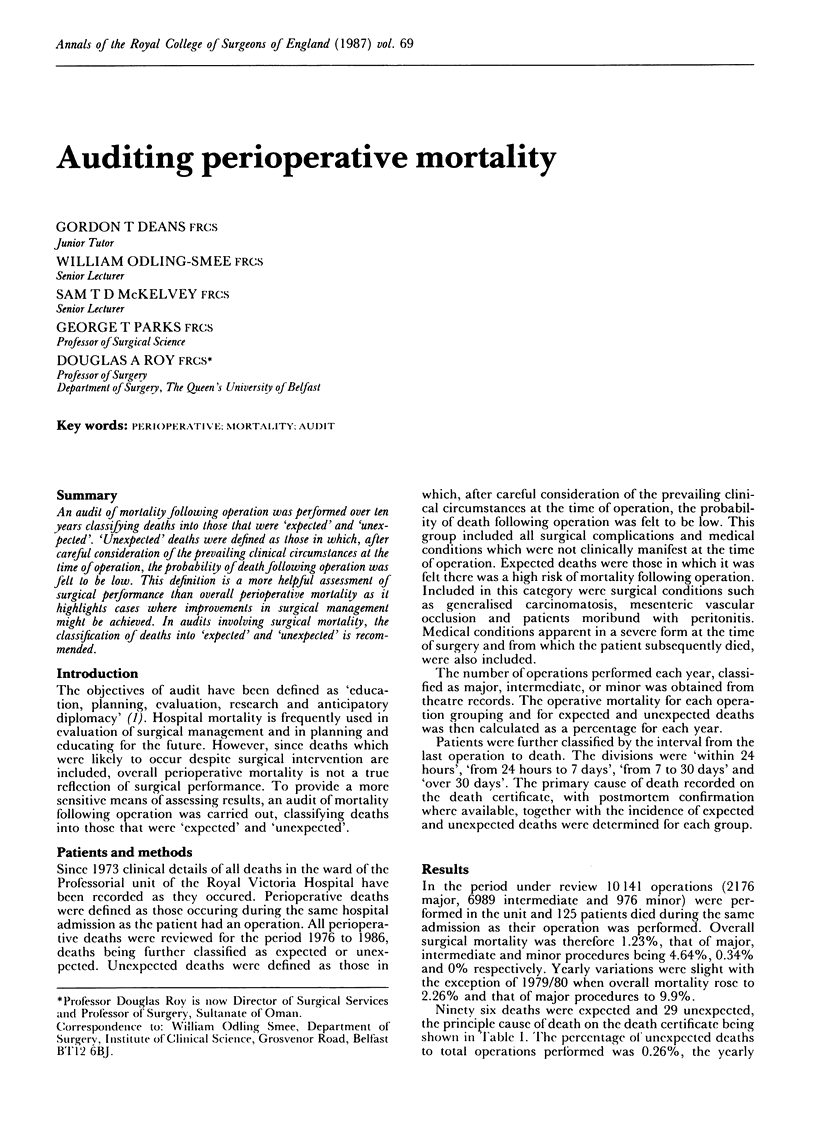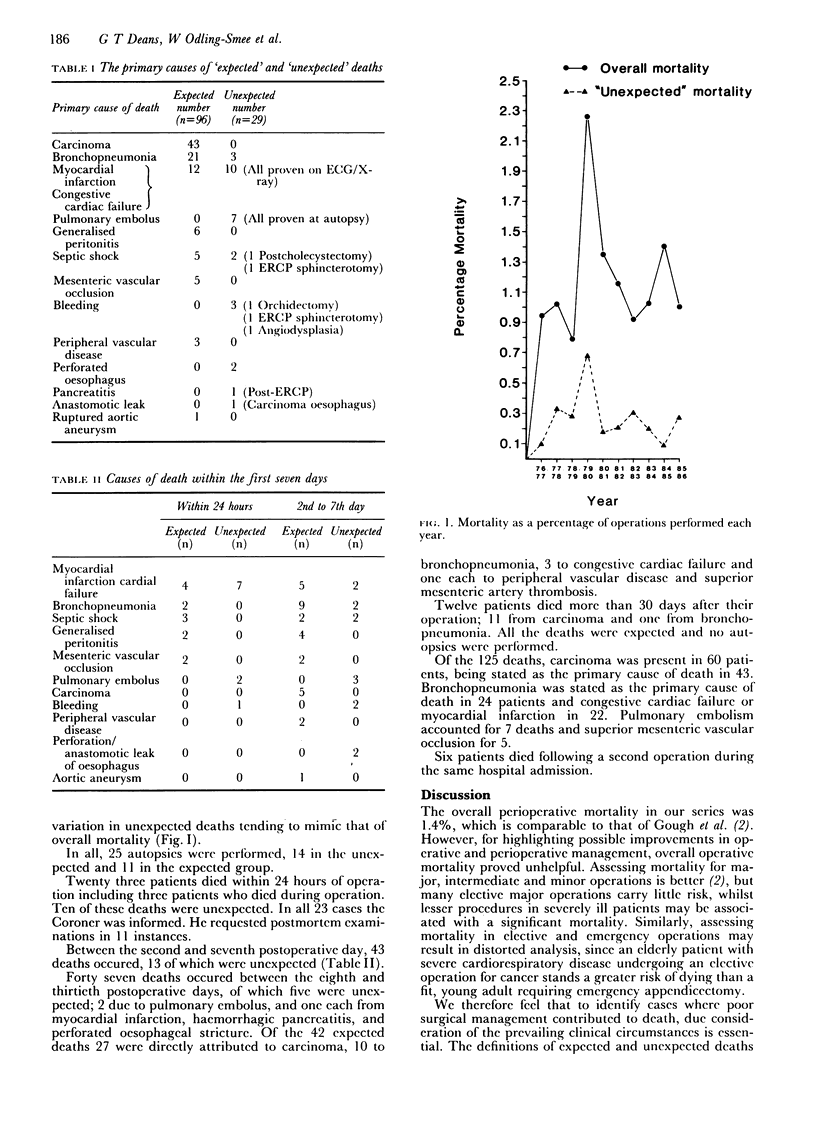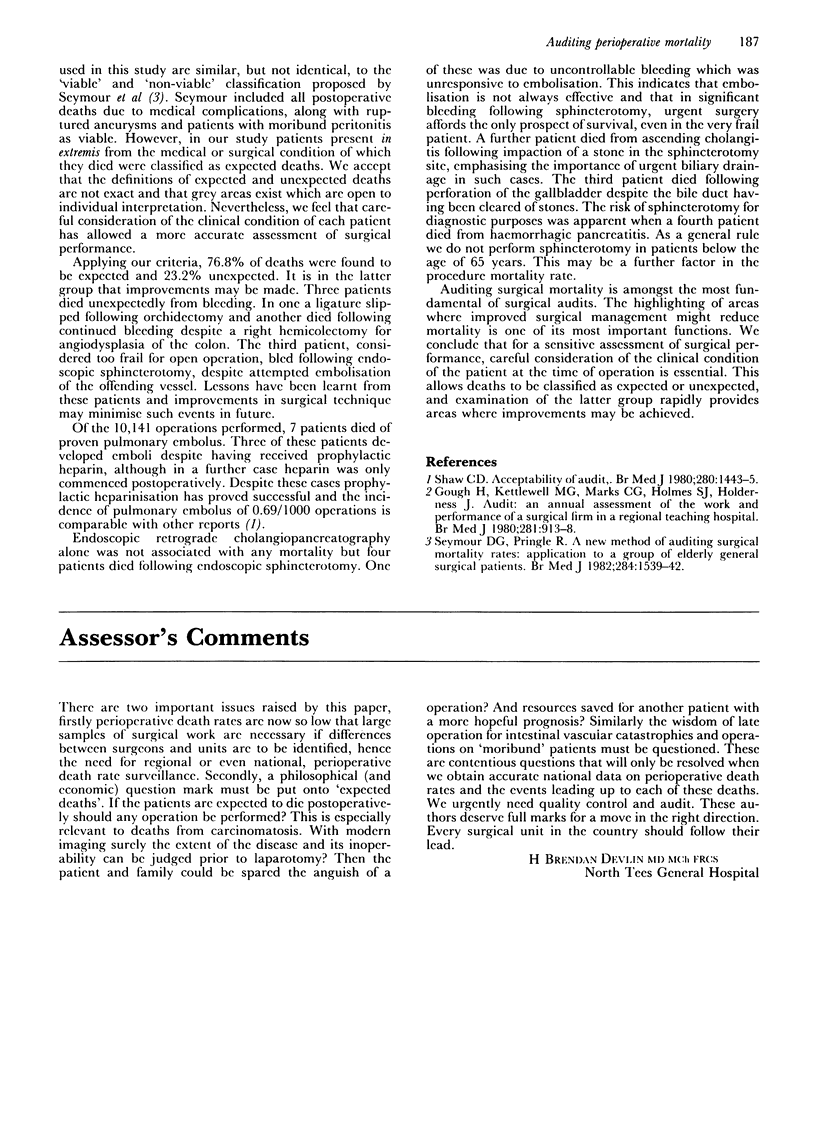Abstract
An audit of mortality following operation was performed over ten years classifying deaths into those that were 'expected' and 'unexpected'. 'Unexpected' deaths were defined as those in which, after careful consideration of the prevailing clinical circumstances at the time of operation, the probability of death following operation was felt to be low. This definition is a more helpful assessment of surgical performance than overall perioperative mortality as it highlights cases where improvements in surgical management might be achieved. In audits involving surgical mortality, the classification of deaths into 'expected' and 'unexpected' is recommended.
Full text
PDF


Selected References
These references are in PubMed. This may not be the complete list of references from this article.
- Gough M. H., Kettlewell M. G., Marks C. G., Holmes S. J., Holderness J. Audit: an annual assessment of the work and performance of a surgical firm in a regional teaching hospital. Br Med J. 1980 Oct 4;281(6245):913–918. doi: 10.1136/bmj.281.6245.913. [DOI] [PMC free article] [PubMed] [Google Scholar]
- Seymour D. G., Pringle R. A new method of auditing surgical mortality rates: application to a group of elderly general surgical patients. Br Med J (Clin Res Ed) 1982 May 22;284(6328):1539–1542. doi: 10.1136/bmj.284.6328.1539. [DOI] [PMC free article] [PubMed] [Google Scholar]
- Shaw C. D. Aspects of audit. 4: Acceptability of audit. Br Med J. 1980 Jun 14;280(6229):1443–1446. doi: 10.1136/bmj.280.6229.1443. [DOI] [PMC free article] [PubMed] [Google Scholar]


